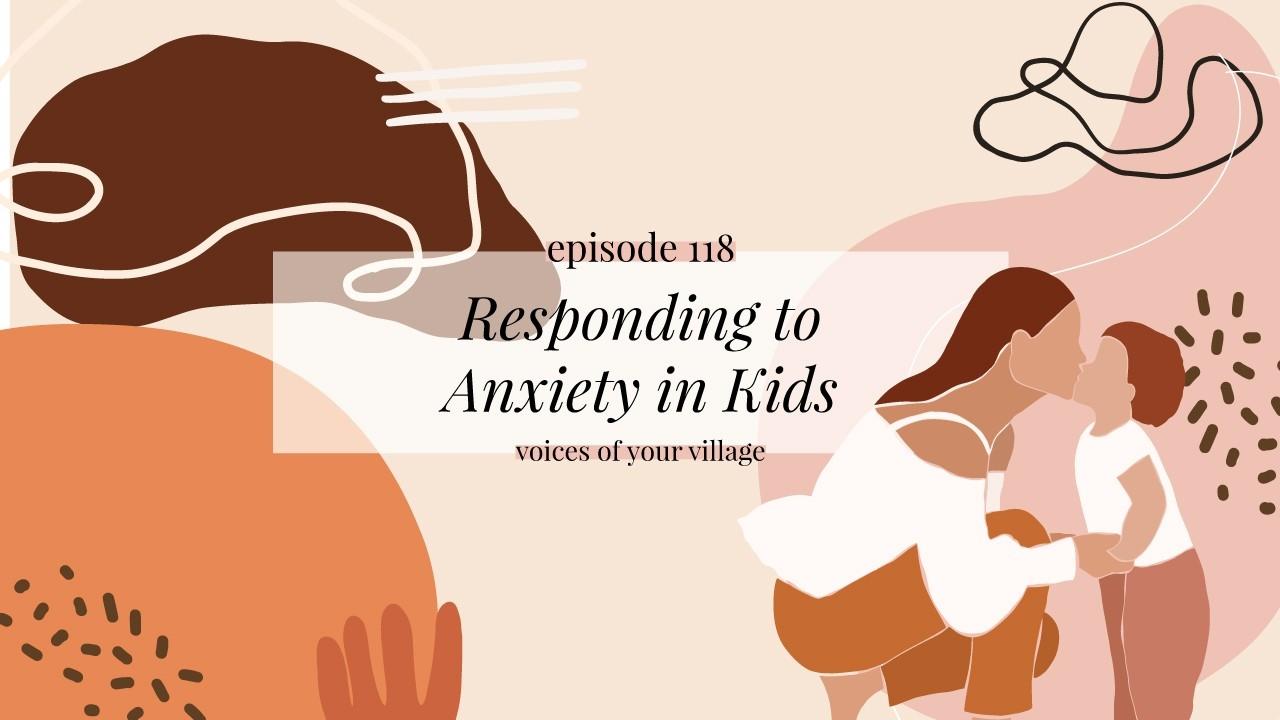Responding to Anxiety in Kids

Hey there, villagers! Welcome back to another episode of Voices of Your Village. I am so jazzed about this week’s episode. I am joined by Jessica Vanderwier, you might know her as Our Mama Village over on Instagram. She is a therapist and mama to almost two kiddos, she’s growing her second right now! Jessica is a psychotherapist who shares emotional support strategies for parents and kids in order to educate on child behavior and mental health in children. We sat down to answer your biggest questions about responding to anxiety in kids. Let’s dive on in!
First, it is important to mention that there is a real culture of fear around anxiety in our society, especially anxiety in kids. But, I think we have come to a really cool place where folks are sharing more and more about feeling anxiety. And now the question on everyone’s lips is: Where do we go from here?
“The old school approach was to learn to live with anxiety, but we have learned that you can live without anxiety and there are ways to process this fear.”
Before diving into your questions, I was curious to ask Jess about her experience with kiddos with anxiety in her private practice. Jess told me that in her private practice she has seen many kids and their parents who experience anxiety. For the past couple of years she has been working at a school and seeing kids as young as kindergarten. We agreed that it is always a good thing to approach kiddos early on about how to address and manage their hard feelings.
If you haven’t seen it, there was a study published by Yale last year that we reference a lot. They found that 1 in 3 kids experience clinically significant anxiety and that if it’s left untreated they will carry it into adulthood. Also, they found that only 50% of kids were responding to therapy and medication for anxiety and overwhelmingly the most effective form of treatment was teaching parents how to respond. Which, makes total sense if a parent is with kiddos consistently then naturally we will see this connection.
“We are anxious about anxiety.”
When I first heard this research my response was: Wow, that is so empowering. Because it makes treating anxiety so accessible if the main solution is to teach parents how to navigate. The biggest thing they noted here is the fear of allowing kids to have fear. When I shared this research we had a villager reach out to ask, what if a kid is having anxiety about being in a different room of the house than mom and dad are? In this instance, our inclination might be to stop the kiddo from having that fear. But instead, the research showed that moving forwards if you are feeling scared in a room by yourself, what can you do to help your body feel calm?
Jess agreed that this research is right on the money because it confirmed a lot of the work we are already doing. In Jess’s perspective, it is really good that we are talking about anxiety so much more and raising the awareness around it. But what can also happen is parents can become a lot more anxious about their kids being anxious, because we have a higher level of awareness about anxiety than we have ever had before.
“You don’t have to live with anxiety, it doesn’t have to rule your life.”
I asked Jess to break down the difference between kiddos feeling fear and feeling nervous or excited. Jess started by going through some normal fears that infants, preschoolers, and school-aged kiddos have to then go through these fears and discover what turns these “normal fears” into anxiety. Then, we worked through your submitted questions and concerns regarding responding to anxiety with kiddos.
For the full episode and mine and Jess’s full thoughts on anxious kiddos, click on this week’s Voices of Your Village episode above and when you’ve finished listening come find me @SeedandSew, I am always excited to chat with you. And for more of Jess and her infinite wisdom find her on Instagram @OurMamaVillage where she posts parenting tools daily or sign up for her course “How to Parent Little Kids With Big Feelings.” As always, remember that we are striving for progress, not perfection. Be kind to yourselves out there.
